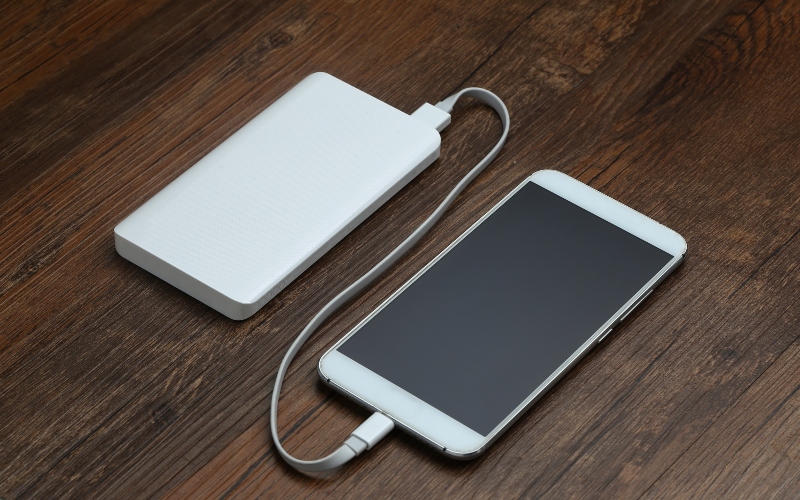Smart ways to free up phone storage without deleting your favourite photos

As technology evolves, managing phone storage is becoming less about what to delete and more about where and how to store smarter.
If you’ve ever tried taking a photo only to be hit with the dreaded “storage full” notification, you’re not alone.
With smartphones now doubling as cameras, offices, and entertainment hubs, running out of space has become one of the most common frustrations for mobile users.
More To Read
- Google tests dual-band hotspot for Android phones
- Android users can now share files via Apple’s AirDrop
- OnePlus 15 launches globally, targets Apple and Samsung dominance
- OpenAI’s AI video generator Sora launches on Android after iOS success
- Kenya faces surge in fake iPhones: How to spot clones before you buy
- Samsung halts Android 16 rollout for Galaxy S23 and S24 amid stability concerns
The good news is, you don’t have to delete your favourite photos or videos to reclaim space. Experts say there are smarter ways to free up storage without losing your memories.
1. Move your files to the cloud
One of the simplest ways to create more space is by using cloud storage.
Platforms like Google Photos, iCloud, OneDrive, and Dropbox automatically back up your pictures and videos, allowing access from any device while keeping your phone’s memory clear.
For Android users, Google Photos offers 15GB of free storage, shared with Gmail and Google Drive.
You can enable the “Free up space” option, which deletes local copies of photos already backed up. iPhone users can use iCloud Photos, where full-resolution images are stored online while compressed versions remain on the device.
Experts recommend syncing over Wi-Fi to avoid using mobile data, especially for high-resolution videos.
2. Optimise photo and video quality
Modern phones often capture images in ultra-high resolution, which fills up storage quickly.
You can adjust your camera settings to reduce image size without compromising visible quality.
On most Android devices, go to Camera Settings > Picture Size and select a lower resolution.
On iPhones, go to Settings > Camera > Formats and choose “High Efficiency”. This enables HEIF/HEVC formats, which compress photos and videos more efficiently than JPEG or MOV files.
Apps like Snapseed or Lightroom Mobile also allow you to edit photos without saving multiple large versions.
3. Use external or wireless storage devices
If you prefer offline storage, external drives designed for smartphones can be a lifesaver.
Brands like SanDisk iXpand, Samsung Duo Plus, and OTG flash drives connect directly via USB-C or Lightning ports.
Some drives come with mobile apps that automatically back up photos and contacts.
For wireless options, Wi-Fi-enabled hard drives or personal NAS (Network Attached Storage) systems let you transfer and access files without cables.
These solutions are especially popular among photographers, content creators, and travellers who handle large media files.
4. Clear app cache and hidden files
Photos aren’t always the main culprit behind low storage; apps can hoard data without you realising it.
Social media platforms like Instagram, WhatsApp, and TikTok store cached videos and thumbnails to load faster, often consuming gigabytes of space.
To clean this up:
Android users: Go to Settings > Storage > Apps, select the app, and tap Clear Cache.
iPhone users: Go to Settings > General > iPhone Storage, then offload unused apps. This removes the app but retains your data for reinstallation.
Also, don’t forget hidden folders like “Downloads” or “Screenshots”, which tend to accumulate over time.
5. Store and stream, don’t save
Streaming instead of downloading is another smart move.
Apps like Spotify, Netflix, and YouTube Music let you stream content online rather than saving files locally.
If your phone supports microSD cards, you can set your camera or messaging app to save files directly to external storage, preserving internal memory for essential apps.
6. Let AI help you declutter
AI-powered tools can now manage storage by detecting duplicate or blurry photos.
Google’s “Files by Google” app scans your device for unnecessary data, duplicate images, and large files you can safely remove. It even suggests what to back up to the cloud.
Other apps like Gemini Photos (iOS) and Photo Cleaner (Android) offer smart categorisation, sorting screenshots, memes, and similar selfies, so you can delete what you don’t need with one tap.
Running out of storage doesn’t mean losing your memories.
With a mix of cloud storage, smart optimisation, and regular cleanup, you can keep every photo and video while still having enough space for daily tasks.
As technology evolves, managing phone storage is becoming less about what to delete and more about where and how to store smarter.
Top Stories Today











































